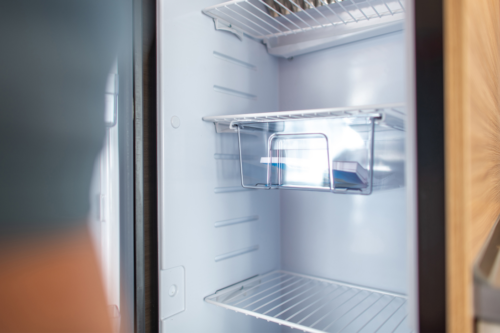
Rigid and spray foams
Components of PIR/PUR Systems
To create foam, two (or more) components are required, which we refer to in Europe as Component A and Component B. The first component is a mixture of polyester and polyether polyols, typically including flame retardants, catalysts, blowing agents, and surfactants. The second component is polyisocyanate, usually polymeric MDI. The composition of both components is always selected to achieve the desired properties of the PIR or PUR foam.
PIR, or Polyisocyanurate
PIR foam contains an increased amount of polyisocyanurate bonds. This results in greater stiffness and thermal resistance, making it more demanding in production processes. The so-called “rigid foam” is primarily composed of closed cells, which makes it a type of closed-cell foam. It is mainly used in the production of sandwich panels, but due to its excellent properties, it is also used for manufacturing insulation jackets for pipelines and as a component in pre-insulated pipes.
PUR, or Polyurethane
PUR foam is expanded polyurethane, which means it is a polymer with a predominance of polyurethane bonds formed from the reaction of alcohol and isocyanate. The blowing agents contained in component A can increase its volume by up to 100 times. The ingredients used in the formulation influence whether the bubbles formed during foaming will be diffusively open or closed. As a result, it is possible to obtain either open-cell or closed-cell foam.
PIR and PUR systems are primarily used as thermal insulation
Open-cell PUR foam is commonly used for insulating residential buildings. It has low density due to its open-cell structure, making it an effective thermal insulator that does not impose a heavy load on building structures and also offers high production efficiency.
Closed-cell PUR foam also serves as thermal insulation in buildings (not just residential). Due to the closed cells filled with gas, it has lower (better) thermal conductivity. It is also characterized by greater mechanical strength, making it ideal for insulating floors and foundations.
Closed-cell foam is used in spray, pouring, or as panels/blocks. When applied in situ, it provides thermal insulation in buildings and cold storage facilities. As pouring foam, it fills and insulates spaces in some household appliances and in the jackets of tanks. Meanwhile, precise elements for pipe insulation are cut from blocks. This type of foam is also used to create molded elements, including hives and wobblers.
PIR foam is one of the fundamental components in the heating and cooling industry. When poured and shaped in molds, it is used for insulating pipelines, protecting against temperature changes and mechanical damage. PIR boards are used for lining cold storage facilities (including vehicles of this type) and are commonly used for insulating residential, agricultural, and industrial buildings.
The difference between a system and a single-component solution.
The advantage of systems over single-component solutions lies in their much greater versatility. Because the foaming process occurs only at the moment of mixing the components, and due to the ability to create any formulation of component A, it is possible to prepare foam that precisely meets our customers’ needs.
Upon request, we can prepare a PIR/PUR system with the required properties. With many years of experience and complete infrastructure, as well as the knowledge of our laboratory staff and technologists, we are able to create a solution that meets all expectations and complies with European standards and regulations.











